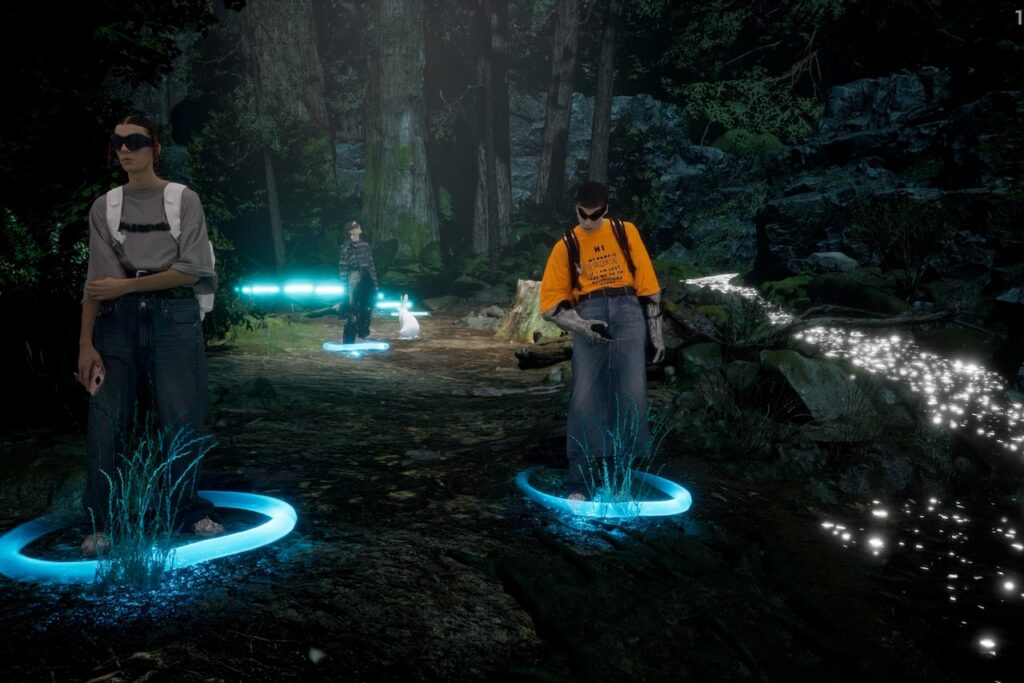Digitalization of the world and the functional character of modern technology bring us a lot of opportunities to design the future, including experiences. Meanwhile, sophisticated yet straightforward design methods, such as 3D technology, have convinced us to think online and outside the box.
In light of these facts, we can begin to hypothesize what the next step may look like. Let’s take the example of 3D technology. One may think, what can we do next after we design the garment in a 3D environment? The answer is in the question itself: we can materialize it using another façade of the 3D technology: 3D printing. However, this method can be way more valuable than one may think.
3D printing technology is a relatively recent innovation where one can manufacture three-dimensional objects from a digital file. The raw materials are processed in chemical and thermal treatments to achieve the end product in the manufacturing process. Those additives can vary from polymer to resin, composite to specifically built primary materials.
When we look at this promising creation, we can’t help but wonder: What happens if we add biodegradable materials into the 3D printing process?
The first answer is simple: 3D printing technology can provide another, more sustainable future for humanity. Materials selected for manufacturing processes can secure this goal. If additives are chosen from organic matter or biodegradable material in general, the end-products would be made up of sustainable, rather than synthetic materials. And, this is just the tip of the iceberg.
Many materials could be used as biodegradable options, from bio-fabricated Meduso, a silicone alternative made by jellyfish DNA that biodegrades in seawater, to Streamateria, which -literally- grows old on your skin. These materials have many unique qualities that can make your garment special, thus enhancing how we experience life.

We have recently witnessed a revolutionary collaboration between Streamateria, a sustainability-oriented company with an unmatched perspective towards fashion, and industry giant Puma, a brand that challenges the norms. We saw the best of both worlds coming together to create garments that we had never seen before thanks to this joint effort.
3D printing marks the production process. Using this technology, Streamateria, a biodegradable material with a lifespan, could be generated. This raw material is inspired by the forest, and it can be used to manufacture sportswear.
Streamateria is also a functional raw material that can elevate athletes’ performances. The garments that contain Streamateria absorb the steam generated during training and then melt when the garment’s lifespan is over. In a proper functional ecocentric way, the garments and athletes come together to create a symbiosis where both life forms could benefit from each other.
In line with the company’s cyclical ideology, the designs get a chance to live and die like us, rather than be thrown away as waste. This mentality can further influence the fashion industry because even though humanity started to recycle and upcycle garments a while ago, we hadn’t explored the possibility of putting a clock on them yet.
Material… has a short lifespan that can be experienced, rather than owned. –Erik Lindvall, Co-founder of Streamateria
This idea – now a reality– can transform consumer mentality spectacularly. Overconsumption is like a figurative mental evolution that affects us all in a market-oriented society. We may struggle with the psychological urge to buy and own things, particularly concerning the fashion industry. However, with a fresh eco-conscious perspective like Streamateria’s approach, we may be able to overcome this deficiency.
Clothes with a lifecycle are technically still a garment, but they won’t feel the same because they grow old with the wearer. They are degradable biomaterials, just like us.
We believe this characteristic can change how we engage with the designs and trigger a broader social change towards a renewable society. Starting from a business model, the whole societal culture could be transformed.

Eco-conscious production, joining the natural cycle, changing how we experience life… All those possibilities look very promising. However, why doesn’t the world already convert to this method? We have an unfortunate answer… Money.
3D printing technology is already highly costly, and the research-development process only adds up to the production costs. The biodegradable materials combined with 3D printing technology have many advantages, from psychological to practical, from functional to philosophical. Still, in the economy-centric contemporary world, the commodity we call money prevails over other means.
Maybe we will see 3D printing more frequently in the future, with the widespread technological advancements, the proliferation of general environmentally-conscious practices, and experiencing the pleasure of perceiving the world like never before.














